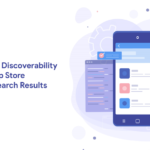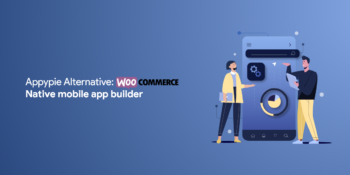Your eCommerce business cannot survive without conversions. You need to drive massive traffic to your website. However, traffic alone would not do the job. Hence, you need to transform visitors into paying customers. It is only then that you will see a marked improvement in your Return on Investment (ROI) and recoup the funds put into the business.
Content marketing is one way to improve your conversion rate. An effective eCommerce content marketing strategy puts you in direct contact with your customers and increases your reach and awareness of your business.
In this article, we discuss 8 crucial aspects of content marketing for eCommerce for your business.
#1 Create Useful Product Videos
Have you ever wondered why people are drawn to platforms like YouTube and Instagram? It is because people are easily attracted to visual content. You ought to make sure that you take advantage of this. One of the first content marketing strategies you should employ includes making videos of your product.
There are a couple of content marketing ideas you could tinker with if you are looking to make product videos. The first is to create an ad for the product. The ad should be interactive, engaging, and short. You should strive to pass your message as quickly as possible. Also, you can create webinars and courses. Here, you can handle issues relating to your business. This is one sure-fire way to draw customers in.
Generally, always find a way to incorporate video content into your eCommerce marketing strategies. You will definitely be thankful that you did.
#2 Answer Frequently Answered Questions
This is an effective content strategy for eCommerce that requires you to be preemptive. Here, you need to look at your product and services and then compile a list of the possible questions a typical user could ask. This makes sure that before your customer has a complaint, you will already have the solution to that. This is especially important if you do not have a 24/7 customer response system. Having a FAQ section is the next best thing to that.
Alternatively, complaints from customers could be a great source of FAQs. If visitors reach out to you about the same issues, you can create a guide providing answers to that question. You can update the FAQs with time. Having a FAQ section shows that you are capable and resourceful. Customers will be more inclined to trust you and your services when that is the case. This, in turn, will result in greater ROI.
It will serve no purpose if your visitors do not get to see the page immediately after they come online. Hence, you must make sure that the FAQ section is conspicuous. Once the user visits your site, they should immediately access it.
#3 Post Customer Reviews
Posting customer reviews is another great eCommerce content marketing strategy you definitely should explore.
You could ask customers to talk about their experience using your product/services. They could either write to you about it or post the reviews on social media. Thus, they could use a specific hashtag to make sure that they create a trend on social media platforms.
In addition, you could have them make videos or testimonials about the product. You could then put those up on your website. Visitors would be able to access unbiased reviews from these customers.
When customers post reviews, they look convincing. Potential customers would then be incentivized to go along with your goods/services when they find others talking about it.
#4 Provide Quality Content via Emails
Emailing will never go out of style, regardless of whatever you hear. Emails give you the route to communicate with your audience, gauge reactions, and deploy actions when necessary.
The great thing about emails is that you can potentially use them for a variety of purposes. You can send welcome emails at the start of your eCommerce marketing process. There, you will essentially be welcoming them to your brand. You could also inform them of your goods and services. The key is to keep the emails as personalized as possible. Generic emails would just bounce off without achieving any purpose whatsoever. For instance, if a visitor added some item to their cart, you could email to remind them or inform them that it is on sale.
Furthermore, your emails should offer some good to the receiver. Hence, you should make sure that your emails are not a bother. Every time a user opens your email, they should find value, and be better informed about something—typically something related to your business. Furthermore, you run the risk of having people dread receiving your emails and maybe even block you from reaching them.
#5 Offer Interactive Quizzes
You can also incorporate quizzes into your eCommerce marketing strategies. Quizzes are popular because they are engaging. A quiz makes the customer an active participant. More so, customers love seeing the results of their quizzes whenever they are done.
When crafting a quiz, make sure that the customer is at the center of your focus. Hence, you ought to make sure that the quiz is relevant to the customer. It should be connected in some way to your niche, but more importantly, the customer should want to take the quiz.
Also, keep the quiz fun and interactive. You do not want to bore your customer to death. Thus, find ways to grab the reader’s attention. You could include videos and photos to liven the interaction. Finally, make the quiz easy to share. That is the only way you can ensure that your reach is widespread.
#6 Share Your Experience through Podcasts
People are suddenly finding podcasts interesting. In recent years, the number of people who listen to podcasts has all but doubled. The reasons for this massive increase include convenience. People can listen to podcasts on the go: while driving, going for a morning run, etc. More so, it is easier than reading. This is also the reason audiobooks are becoming quite attractive. Finally, in a lot of cases, podcasts are free.
You may want to jump on this trend. Use podcasts to share your personal stories. These stories should be connected to the business. Thus, you could share stories about the early days of your business or the challenges you experience in the day-to-day running of your business. In fact, there is almost no end to the topics you could talk about on your podcasts.
Podcasts make you relatable. When you even go the extra mile of talking about your personal experiences, your likeability will grow. Customers want to feel like they know you. Having a podcast will allow them to put a face (voice) to the name.
Finally, always direct people back to your website at the end of the day. Make the podcast easily accessible and shareable. Here, your social media pages play a great role. You could share the links to the podcast on your social media pages and have fans and followers repost it.
The idea is to draw customers to your website using podcasts. However, it is still possible to make money from the podcast itself. Once you garner a sizable listenership, you can make money based on the number of people listening to you. Hence, it will be a win-win on both ends.
#7 Utilize User-generated Content
This is the last item on our list, but it is definitely not the least. User-generated content is a great eCommerce content marketing strategy. This could be in the form of videos or testimonials, reviews, photos, etc. The key thing is that the content should come from your users. The difference between this and influencer marketing is that the customers actually use the product in the former. Furthermore, there is no specific payment for users, as in the case with influencers.
Have your customers generate content in any form and then post it on your website. As already mentioned, visual content attracts the most traffic, so you could have them make videos or send in pictures where they are using the product.
The great thing about user-generated content is that it increases your credibility. Just like reviews, when visitors see the content generated by other consumers, they will be more likely to trust you.
#8 – Monitoring E-commerce Visitors
When it comes to an e-commerce website, it’s quite essential for you to understand your customer’s profiles and monitor every single action they take. While this process is pretty much straightforward in a physical store, it involves some complexities with e-commerce. But that doesn’t mean that it’s impossible, for sure.
So the question is what are things that need to be monitored? While the digital environment offers tons of metrics, there is actually no need to track them all. So below are some of the most important metrics that you should take into consideration.
Number of visitors
The first and foremost thing that needs to be performed is to track website visitors. Although the higher traffic doesn’t guarantee higher sales, it’s essential in identifying an interest in the items on sale.
Bounce rate
The bounce rate demonstrates the number of website traffic that visited your site but left without taking any further action. If you find the bounce rate is high, it’s probably because you’re attracting the wrong visitors to your store.
Conversion rate
Undoubtedly, the conversion rate is the most important metric for any e-commerce website. It shows how many percentage of users took a specific action – which could be anything like sign up or download or make a purchase etc.
Dwell Time
To put it simply, dwell time is the amount of time a user spends on your website. Therefore, you have to be aware that this metric should be monitored on a regular basis since it plays a vital role in checking whether your cost planning is correct and your prices are in line with it.
Customer acquisition cost (CAC)
Every single purchase made in an e-commerce store has a certain cost – which is important for a consistent pricing policy to get rid of losses. The calculation process is quite simple. What you have invested so far in your e-commerce store in order to make the sale must be counted.
Conclusion
Running an eCommerce business is no mean feat. It could seem herculean to convert traffic to paying customers. However, you must understand that it is indeed possible to be successful with your eCommerce content marketing strategy. You can break even and increase your conversion rates and ROI. The eCommerce content marketing ideas above will get you well on your way to achieving that. Do not forget that your target audience is unique. Study them, then implement the strategies you believe will best achieve your purpose.










No Comments
Leave a comment Cancel